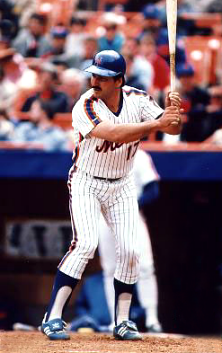Hardball Times
If you are interested in pitching—really interested, I mean—you simply have to read Pure Baseball by Keith Hernandez (with help from Mike Bryan on grammar and spelling and stuff). And when I say interested in pitching, I don't mean you know who won the last five Cy Young Awards or even who had the best strikeout-to-walk ratio in the American League last year. Rather, I mean you want to know not only what that last pitch was and how it moved, you want to understand why it was thrown, why it worked or why it didn't.
The subtitle of Hernandez's book is "A pitch-by-pitch guide for the advanced fan," and that is a good description. Hernandez goes through two games from the 1993 season, almost (but not quite) at the pitch level. That's not to say that the book is only about pitching—Hernandez holds forth on many questions of baseball tactics here, including base stealing, bunting, hit-and-running, productive outs, defensive alignments and many others.
But what really fascinates about this book is getting an insider's perspective on pitching and the batter-pitcher confrontation. Hernandez was clearly a "cerebral" ballplayer, a guy who was always thinking, thinking trying to get an edge. There was nothing "see ball, hit ball" about Keith Hernandez.
So, what did Keith Hernandez teach me about pitching? Well, as some of you may know, I've been working with the PITCHf/x data, which has allowed us to study pitching at a level of detail that was almost unimaginable not very long ago. So, what I'm most interested in is pitches—what are the different pitch types, what distinguishes one from the other, and how are they used differently?
I've written quite a bit about pitch types already, so I thought I knew quite a bit, but ol' Keith showed me a thing or two (which is so unsurprising, it's not even funny).
The tailing fastball
One of the first things I learned from studying the PITCHf/x data is that fastballs typically move quite a bit to the side. Nobody much talks about this. Actually, that's not true, the other day I happened to catch Brandon Webb's start against the Mets and one of the broadcasters mentioned Webb's sinker that "moves in on a right-handed hitter."
That's true, Webb's sinker (which is a kind of fastball) moves sideways, towards a right-handed hitter, about nine inches. And Dan Haren's fastball moves in the same direction by six inches. John Maine? Eight inches in on a right-handed batter. Just about all right-handed fastballs move in an a right-handed hitter (and likewise, lefty fastballs move the other way—away from a right-handed batter).
Hernandez, in his book, tells us something important about the typical tailing action of a fastball: It makes it difficult to come inside to the opposite-hand hitter. Actually, Hernandez is discussing Phillies left-hander Danny Jackson, who had quite a bit of tail on his fastball. When Jackson throws to a right-handed batter, the fastball tends to tail away from the hitter.
That's great for pitching outside, but it makes it hard to pitch on the inside corner, as the ball tends to drift out over the heart of the plate. Here's Keith:
After thirteen pitches tonight in Philadelphia, Danny Jackson hasn't come inside one time. One reason is that his fastball tends to run away from these right-handed Braves hitters. If that pitch does not start out three or four inches inside, if instead it starts out over the inside corner, it will run toward the middle of the plate and right onto the barrel of the bat.
For the rest of this outstanding piece by John Walsh, please visit the Hardball Times.








No comments:
Post a Comment